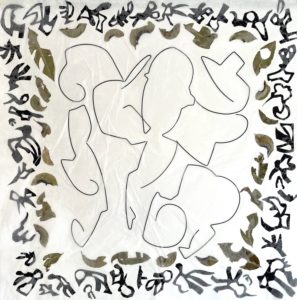Calligraphies were born worldwide from the necessity to communicate through writing. In multiple regions and over time they have taken different forms. Curved or angular lines with letters attached or separate, brushstrokes, geometric shapes, small hand painted symbols, logos, calligraphies come in endless variations. These variations are often specific to the writer, so that a given handwriting can almost lead to the identification of its author. It is used by graphologists to point to traits of a person’s character.
Art and calligraphy have always walked hand in hand. In the Western world during the Middle Ages, the first letters of religious texts were decorated with illumination. In traditional Chinese poetry, painting and text are indissociable and appear together on the same scroll. Cubism, modern and contemporary art have widely used text, interwoven with painting. Letters or words can be laid out on the surface where they are written to form a shape, an object, a landscape or something else. This is very common in Arabic calligraphy. These are only a few examples but the practice of mixing letters, words and sentences with drawing and painting, is widespread in so many cultures.
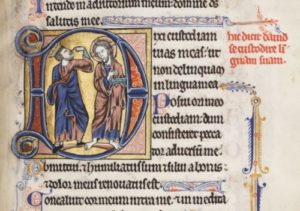

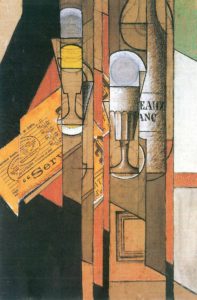
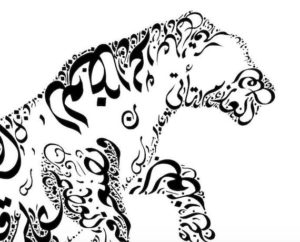
‘My’ art calligraphy mostly starts with a line, made of metal wire which I bend. The lines do not come in recognisable shapes and do not represent anything. They comprise curves and angles, one or more, are big or small, long or short. Usually the lines are inspired by nature. Broken horizon lines, enlarged natural shapes, movements of branches. The lines in front of me are never less than thirty. I then start creating a composition, assembling several pieces. Some lines will be touching one another in a given point, others stand alone. I try to create movement, a flow; visual balance that produces a sense of harmony. The wire that I use is rigid but the aim is to be fluid.
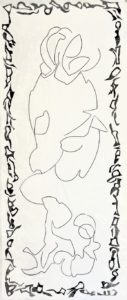
A Chinese calligrapher once told me that very few people are able to read cursive Chinese. Therefore, when they look at a page in cursive script, they try to feel the writer’s emotions and look at the general shape of the page which they personally interpret. Maybe it is this consideration that led to my ‘calligraphies’. They are asemic as they have no specific meaning but reflect a state of emotions that can be tensed and intense or light and open. Do they help ask new questions or enable to see things differently?
